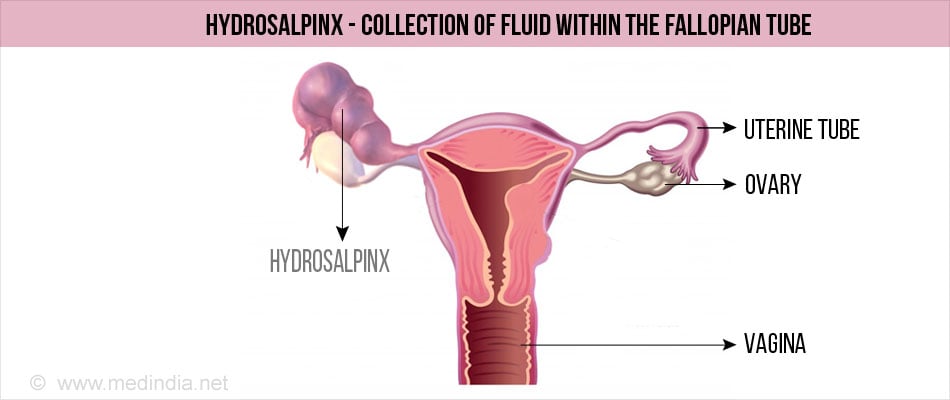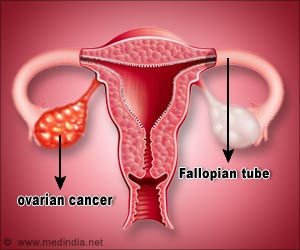What is Salpingectomy?
Salpingectomy is a surgical procedure for removal of one or both diseased fallopian tubes in females.
Anatomy of the fallopian tubes: The fallopian tubes are tube-like structures that open into either side of the uterus of females. Each fallopian tube has four parts, infundibulum, ampulla, isthmus and intramural part. The infundibulum has finger-shaped projections called fimbriae. Below the fimbriae are located the ovaries. The ampulla is a wider part of the tube. The isthmus connects the ampulla to the intramural part, which enters the wall of the uterus.
The fallopian tubes transport the immature egg from the ovaries to the uterus. If a sperm is present, it fertilizes the egg in the ampulla. The fertilized egg then passes through the fallopian tube into the uterus, where it implants and forms the fetus.
What are the Types of Salpingectomy?
Salpingectomy can be of several types:
- Partial Salpingectomy, where only a part of the fallopian tube is removed
- Complete or Total Salpingectomy, where the entire fallopian tube is removed
- Bilateral Salpingectomy, where both the fallopian tubes are removed
- Unilateral Salpingectomy, where only one fallopian tube is removed
- Salpingo-oophorectomy, where the ovaries are removed along with the fallopian tubes
What are the Indications for Salpingectomy?
Salpingectomy can be done for conditions affecting the fallopian tubes, which include:
- Ectopic (tubal) Pregnancy: Ectopic pregnancy is a condition where the fertilized egg settles outside the uterus instead of within it. In tubal pregnancy, following fertilization in the fallopian tube, the fertilized egg implants in the tube and grows within the narrow tube. If the tubal pregnancy is not surgically removed, the tube can rupture as the product of conception grows resulting in bleeding, peritonitis, drop in blood pressure and even death
- Hydrosalpinx: Hydrosalpinx is the accumulation of fluid within the fallopian tube. It can result in infertility. Removal of hydrosalpinx prior to in vitro fertilization improves the outcomes of the procedure.

- Infection and Stricture of the Tube due to organisms like gonorrhea, syphilis or chlamydia
- Cancer of the fallopian tube
- As a prevention of ovarian cancer at women at a high risk. In this procedure, the ovaries are removed along with the fallopian tubes. This is the recommendation of the American College of Obstetricians and Gynecologists and has been published in 2015
- Along with the removal of the uterus, a procedure referred to total abdominal hysterectomy with bilateral salpingo- oophorectomy
What are the Pre-operative Tests Done Before Salpingectomy?
Prior to salpingectomy, tests are done to diagnose and confirm the underlying disease condition. These include:
- Abdominal and Pelvic Ultrasound: An abdominal ultrasound is commonly done to identify the underlying cause. During the ultrasound, a gel is applied to the abdomen and a probe is passed over it. Images are obtained which are visualized on a screen. The procedure is completely safe and painless and done as an outpatient procedure.

- Hysterosalpingogram: During this test, contrast medium (also called a dye) is introduced into the uterus via the vaginal passage through a syringe. The contrast passes through the uterus and the fallopian tube into the abdomen, which can be visualized with imaging tests. If there is an obstruction in the fallopian tube, the contrast is unable to pass through the tube on that side and is seen as a narrow section on the x-ray.
- Diagnostic Laparoscopy: Laparoscopy is sometimes used to directly visualize the fallopian tubes and other structures of the abdomen and diagnose the problem
- Routine Tests: Routine tests which are done before any surgery include:
- Blood tests like hemoglobin levels, blood group, electrolytes and kidney function tests
- Routine urine test
- ECG to study the electrical activity of the heart before anesthesia to make sure that the patient is fit prior to the surgery.
- Chest x-ray to rule out infection in the chest before anesthesia.
In older group of patients, detailed assessment of the heart may be required to make sure that they are fit for surgery and undergo an anesthesia.
What is the Procedure for Salpingectomy?
Salpingectomy may be done as an open procedure or through a laparoscope.
Type of Anesthesia - Salpingectomy is done under general anesthesia and sometimes under regional anesthesia by administering an injection into the back to numb the spinal nerves.
If you are under general anesthesia, you will be asleep during the procedure and will not be aware of what is going on.
Pre-operative Check-up – Routine tests as indicated above are ordered a few days before the surgery. Admission is usually required a day before the surgery.

Day before Surgery -An enema is sometimes administered the previous afternoon or evening before the surgery. Some units may prefer to give laxative tablets the previous evening.
Fasting before Surgery - Overnight fasting is required and occasionally intravenous fluid maybe required to keep you well hydrated. Sedation is sometimes required for good overnight sleep before the surgery.
Shift from the ward or room to the waiting area in the operating room - An hour or two before the surgery, you will be shifted to the operating room waiting area on a trolley.
Once the surgical room is ready, you will be shifted to the operating room.
Shift to the Operating Room - The ambience in the operating room can sometimes be very daunting and a small amount of sedation can help overcome your anxiety. From the trolley, you will be shifted on to the operating table. As you look up, you will see the operating light console and at the head end will be the anesthesia machine. There may also be monitors to check oxygen levels, ECG and other vital parameters. A constant beeping sound may be present from the monitors, which may sometimes be irritating.
Anesthesia before Surgery - If you have to undergo general anesthesia, the anesthetist will inject drugs through an intravenous line and make you inhale some gases through a mask that will put you in deep sleep. Once you are in deep sleep, a tube will be inserted into your mouth and windpipe to administer the anesthesia gases to overcome pain and keep you comfortable. If you are undergoing regional anesthesia, an injection will be administered into your lower vertebral column.
The Salpingectomy Procedure – Once you are anesthetized, an incision is made in the lower abdomen. If you have to undergo laparoscopy, small incisions will be made to pass the laparoscope and instruments for the surgery. During laparoscopy, the abdomen is insufflated with carbon dioxide for better visualization.
Once the fallopian tube is identified, it is separated from surrounding tissues while controlling the bleeding. The tube is tied at its uterine end and it is cut out. In some cases, instead of ligatures, endoscopic staples, endocoagulation, cautery, or laser may be used. The ovary may also be removed along with the fallopian tube. In younger women who would like to maintain their ovarian function and fertility, the ovaries are retained. The procedure will be repeated on the other side in patients undergoing bilateral salpingectomy. The incision is then closed.
Waking up from General Anesthesia – Once the surgery is over you will wake up and the tube down the wind pipe will be removed. You will be asked to open your eyes before the tube is removed. You will be sedated and the voice of the anesthetist may be faint. Once the tube is out, you may have cough and sometimes nausea.
Rarely there may be a tube going into the stomach called a nasogastric or Ryle’s tube to keep it empty. There will also be an intravenous line. You will remain on oxygen. Once fully awake, you will be shifted on the trolley and taken to the recovery room.
Recovery Room – In the recovery room, a nurse will monitor your vitals and observe you for an hour or two before shifting you to the room or a ward.
Post-operative Recovery – You will remain in the hospital for a few days following the procedure. A laparoscopic surgery ensures a shorter recovery time and therefore duration of admission. Light foods may be allowed following the surgery.
Occasionally chest physiotherapy maybe started after 24 hours to prevent chest infection.
If the salpingectomy has been done for a ruptured pregnancy, you may need to be in an Intensive care Unit overnight. Blood transfusion may also be required.
DVT Prophylaxis – Early movement of your legs and some mobilization prevents DVT or deep vein thrombosis, where a clot is formed in the deep veins of the legs. The clot can travel up to the lungs and even be fatal. Other measures like small dose of heparin and special stockings may also be used.
Painkillers may be prescribed depending on the extent of the pain. A few shots of antibiotics maybe given intravenously to prevent infection.

What are the Complications Associated with Salpingectomy?
Complications that may follow the salpingectomy procedure include:
- Complications due to anesthesia
- Bleeding
- Injury to surrounding structures
- Infection
- Chronic pain
Bilateral salpingectomy results in infertility.







